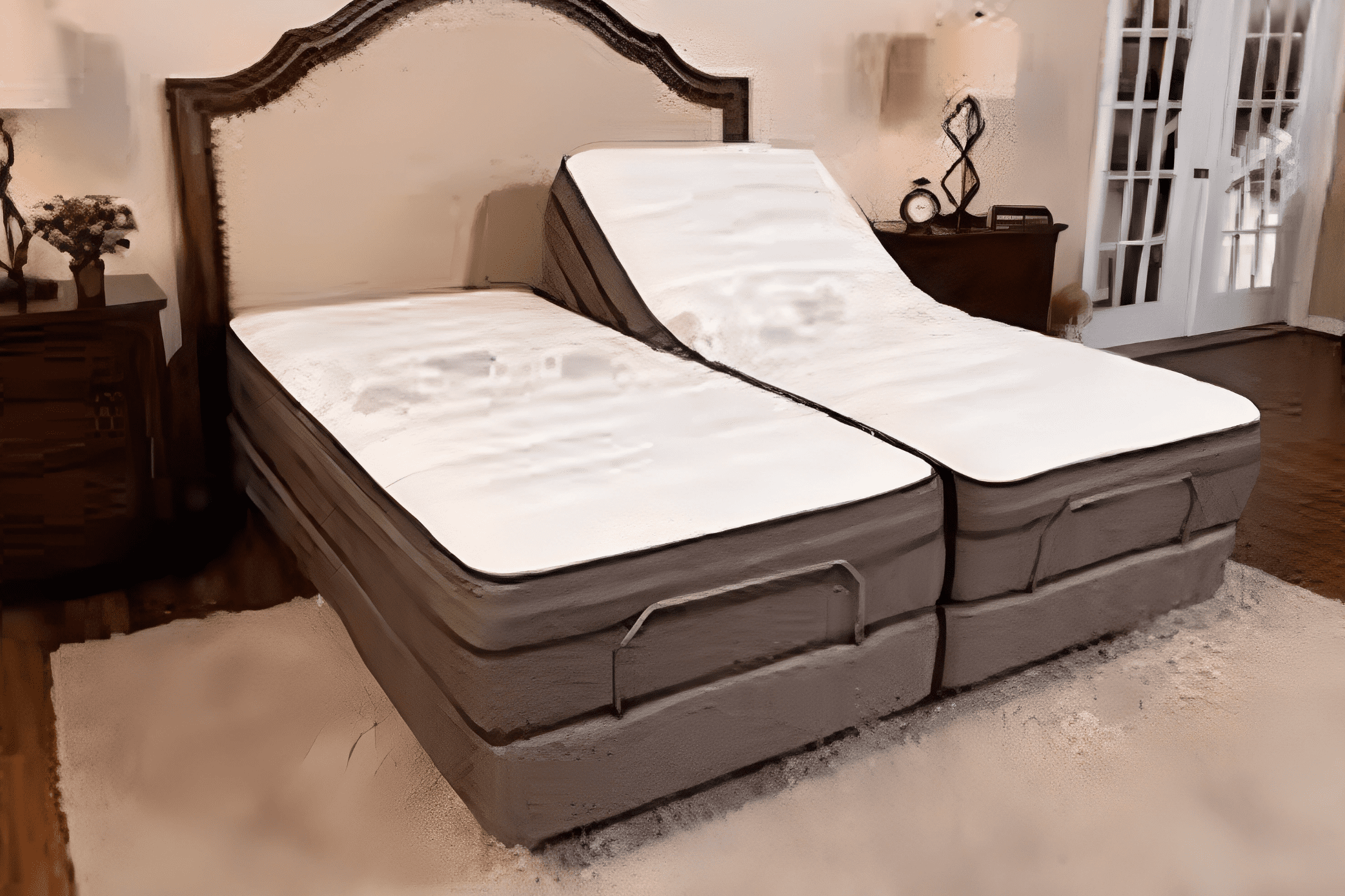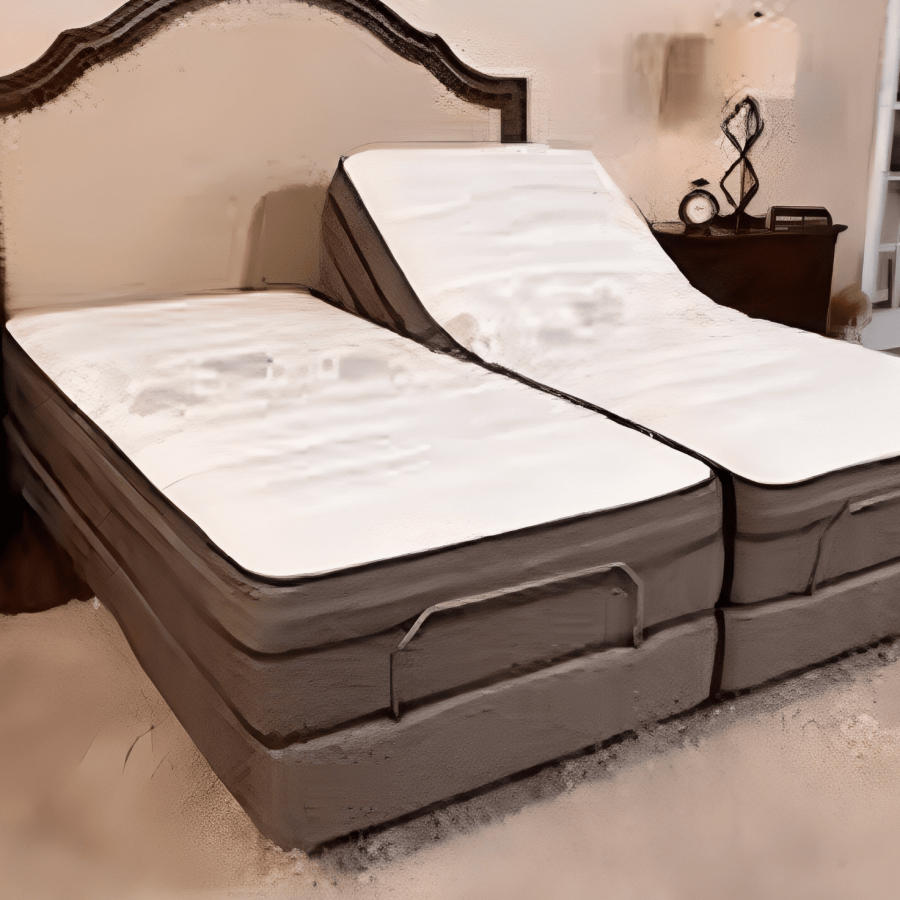
Are you considering bringing home an adjustable bed? There are many pros and cons to using a bed that can change positions, all depending on your needs or those of a loved one. If it’s for a senior or patient who needs medical support, you can safely avoid many of the cons by purchasing the right kind of adjustable bed – a hospital bed.
Table of Contents
Home » What Are The Pros and Cons of An Adjustable Bed?

Learn About Homecare Products Info
The Pros Of An Adjustable Bed as a Healthcare Product
The main positive of the adjustable bed is comfort. The beds come in many shapes and sizes, from twin to king, letting the user get the room and features they need. It’s even possible to get an adjustable frame that allows each partner to choose their sleeping position. Dual controls and the ability to position themselves in a way best suited to each partner’s unique needs help both get a better night’s sleep.
There may be some therapeutic benefits, too, and not just related to the quality of sleep. Since the user can change the position of the upper body and knees according to their needs, they can improve their blood circulation; the heart can pump blood to parts that need it the most. Better blood flow may reduce pain from muscle aches, help loosen joints, and help people manage medical conditions. Anyone with acid reflux or sleep apnea can rest on an incline, reducing the likelihood of the symptoms that might keep them up at night.
Adjustable beds can also be versatile. The user can take on an upright position, letting them enjoy their surroundings even if confined to bed. This piece of furniture may not be a perfect substitute for comfortable seating, but it can work within tight constraints and serve as a multi-purpose solution for any space issue.
While senior users who move independently can rely on a conventional adjustable bed for comfort, those with more severe health and mobility needs can’t depend on it for a full range of support.
The Cons Of An Adjustable Bed as a Health Care Product
Depending on the model, many users will find that adjustable beds can’t meet all their needs. It may be hard for an individual to shift position during the night. While this doesn’t present a problem for sleepers who don’t toss and turn, anyone who moves in their sleep – or has a condition that exacerbates the problem – will find their resting spots uncomfortable.
Adjustable beds can also be hard to move, which doesn’t work well for users who want to change their room layout. Adjustable beds weigh hundreds of pounds more than a conventional bed and mattress. Not only will the initial move-in process for the adjustable bed be more difficult, but it may be hard to re-position or relocate the bed in the future.
Consumers with medical needs must also know there are many variations in the quality of adjustable electric beds on the market. The variation in mattress and motor quality shouldn’t detract you from buying an electric bed; it just means finding the right one becomes more difficult.
For Comfort & Support, A Hospital Bed Is The Perfect Adjustable Bed
For patients who need in-home medical support, there can be important reasons to opt for a more specialized bed solution. On top of having all the adjustable features of an ordinary electric bed, the frame and mattress provide a sturdier surface for seniors who need additional help getting out of bed. The ability to lower the overall height of the bed removes another obstacle, and it’s not a feature you can find on most conventional models.
Hospital beds are designed and manufactured with medical well-being in mind; they bring a heavy-duty quality that can withstand healthcare settings right to the user’s home. Advanced features like assist bars, side rails, and pressure-relieving memory foam mattresses can help those restricted to their beds for most of the day. They can move around independently, adjust their sleep position as needed, and enjoy meals and care in a seated position. Hospital beds also have heavy-duty casters and wheels for easy movement to different parts of the room or floor.
Patients don’t have to worry about feeling like they’re in a hospital. A SonderCare model only brings the hard work of a hospital bed, not the sterile look. The user can expect exceptional levels of comfort, support and durability, even as they handle medical and mobility problems.
Frequently Asked Questions About Adjustable Beds
Browse Adjustable Beds For Healthcare Resources
Get quality complimentary articles on the topics of healthcare and homecare products for senior living and hospice facilities. Read other popular healthcare product articles below.


